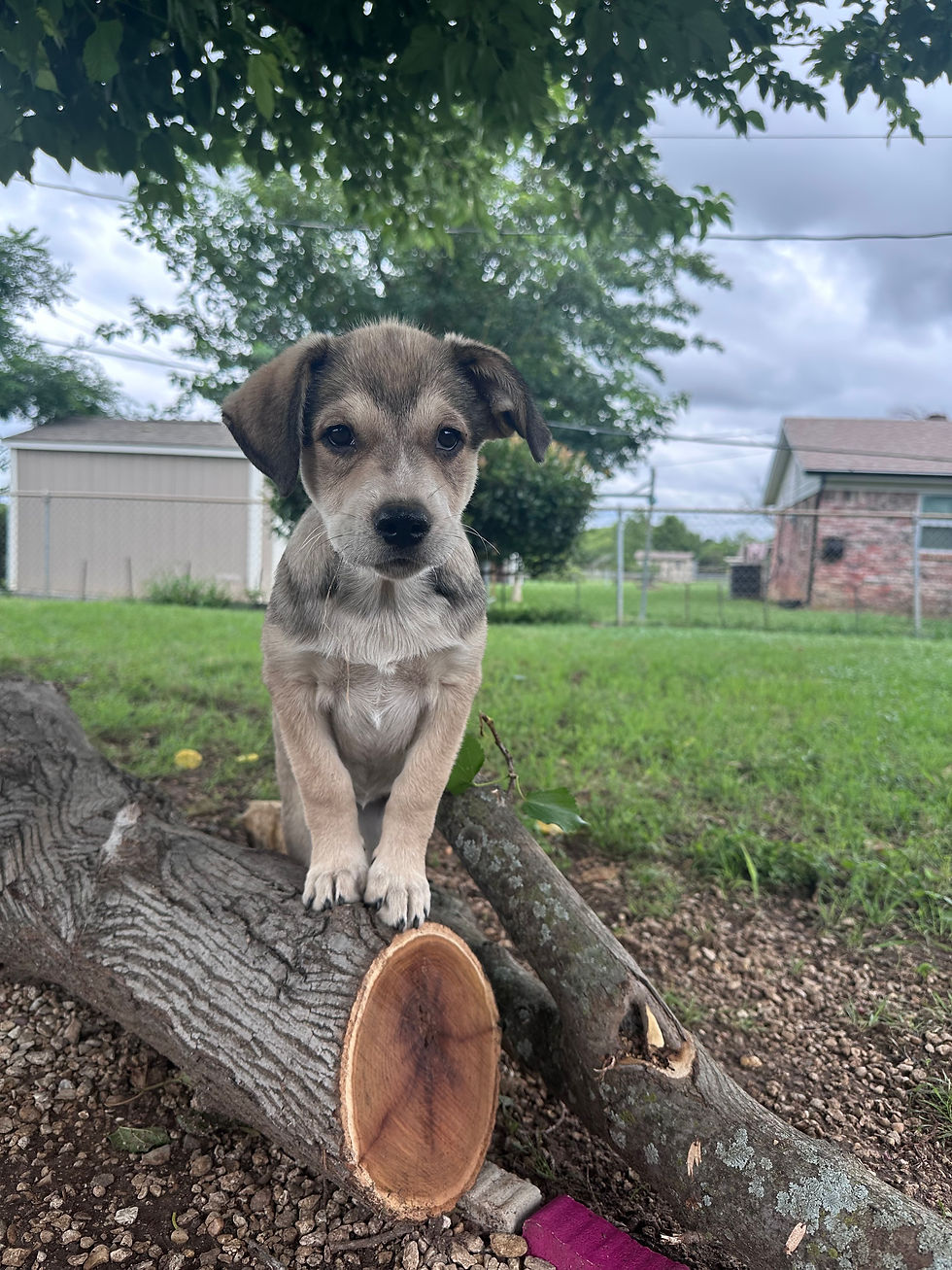Getting Started with Walking Your New Puppy
- samanthaforinger2
- Jun 22
- 4 min read
Bringing a new puppy into your home is an exciting adventure. While there are many aspects to caring for a puppy, one essential skill to develop early on is walking on a leash. In this guide, we will explore how to begin leash training your puppy, making outdoor strolls enjoyable for both of you.
The Importance of Puppy Training
Training your puppy is crucial for developing good behaviors. Early training sessions set the foundation for your dog’s manners and social skills. This contributes to building a strong bond between you and your furry friend.
Statistics show that puppies that receive training early on are less likely to develop behavioral issues later. For instance, according to the American Kennel Club, 75% of owners report that training improves their dog’s behavior.
Choosing the Right Equipment
Before you hit the pavement with your puppy, invest in the right walking gear. A good-quality leash and collar are essential for safety and control.
A harness is often recommended for puppies, as it prevents strain on their necks when they pull. Choose a leash that is at least six feet long. This gives your puppy room to explore, but it also allows you to maintain control.
Tip: Look for adjustable collars since your puppy will grow quickly.

Getting Started with Leash Training
Take your time during the initial leash training sessions. Begin in a quiet, familiar environment, like your backyard or living room. Place the collar or harness on your puppy and attach the leash.
Let your puppy wear the leash indoors for short periods. This helps them get used to the feeling without the pressure of being outside. Encourage them with treats and praises when they move around calmly while wearing the leash.
Once your puppy is comfortable indoors, it's time to take the next step. Move outside into a low-distraction area. Allow your puppy to sniff the ground and take in their new environment. Make sure to reward them for walking beside you without pulling.
Teaching Basic Commands
While you are walking, it is vital to teach your puppy some basic commands. Commands like "sit," "stay," and "heel" are essential for safe walks.
During the walk, periodically stop and issue the "sit" command. Reward your puppy when they obey. This reinforces the command and builds their attention on you during the walk.
Additionally, when your puppy moves ahead of you, gently pull the leash back and say the "heel" command. Encourage them to return to your side with treats. Consistent practice of these commands will improve leash manners and create a more enjoyable walking experience.

Dealing with Distractions
Puppies are naturally curious and can easily be distracted by other animals, people, and sounds. While on walks, it is crucial to keep their focus on you.
To manage distractions, use high-value treats that your puppy adores. Whenever something catches their attention, redirect their focus back to you with the treat. This technique reinforces positive behavior and helps them learn that looking to you is rewarding.
You can also practice passing other dogs or pedestrians. Start at a distance, rewarding your puppy for maintaining calm behavior. Gradually decrease the distance over time while continuing to reward them.
Patience and Consistency
Remember, consistency is key in puppy training. Keep training sessions short, around 5-10 minutes, and always end on a positive note. Avoid punishing your puppy for mistakes; instead, focus on rewarding good behavior.
Training will take time, so be patient. Celebrate small progress as your puppy learns. If you’re unsure of any techniques, consider enrolling in a puppy training class. These classes are not only beneficial for socialization but also provide guidance from experienced trainers.

Making Walks Fun
To keep your walks enjoyable, consider varying your routes. Explore different neighborhoods, parks, or trails. This exposure to various stimuli is beneficial for your puppy's development as they learn to navigate new environments.
Additionally, include playtime during walks. Allowing your puppy to briefly engage in play can break up the routine and reinforce the connection between walking and having fun. Bring a favorite toy along for impromptu games of fetch as you stroll.
Celebrating Milestones
Every little achievement warrants celebration. When your puppy walks calmly without pulling for a certain distance, celebrate with treats and praise. If they stay calm while encountering distractions, give them a reward. These positive reinforcements build confidence and encourage repeat behavior.
Tracking your puppy’s progress can also be a motivating factor. Note each milestone in a training journal. This helps you see how far your puppy has come and areas that may need more attention.
Staying Safe on Walks
While walking your puppy, safety should always be a priority. Ensure your puppy is up-to-date on vaccinations and flea treatments, as well as wearing ID tags with your contact information.
Be cautious of busy streets and crowded areas. Consider using reflective gear for both you and your puppy if walking during low-light conditions.
Lastly, keep an eye on the temperature. Puppies can be more sensitive to heat, so avoid long walks in hot weather. Opt for early morning or late evening strolls during the warmer months.
The Joy of Walking Together
Incorporating walks into your routine provides physical and mental stimulation for your puppy. Establishing a leash training routine not only promotes good behavior but also enhances the bond between you and your puppy. Walking builds trust and offers both of you a chance to explore the world together.
For more tips on enhancing your outdoor adventures, consider learning about puppy leash training. Remember, training takes time and patience, but with love and consistency, you will turn your walks into cherished moments together.
Happy walking!

Comments